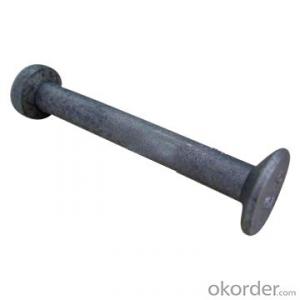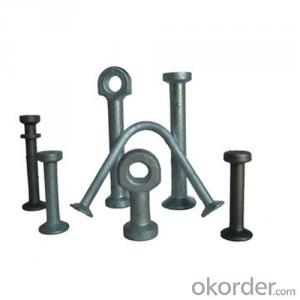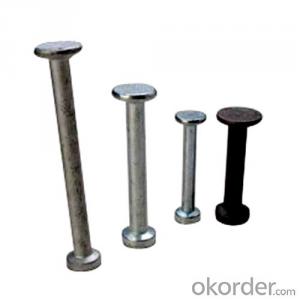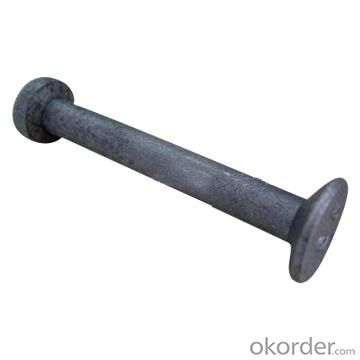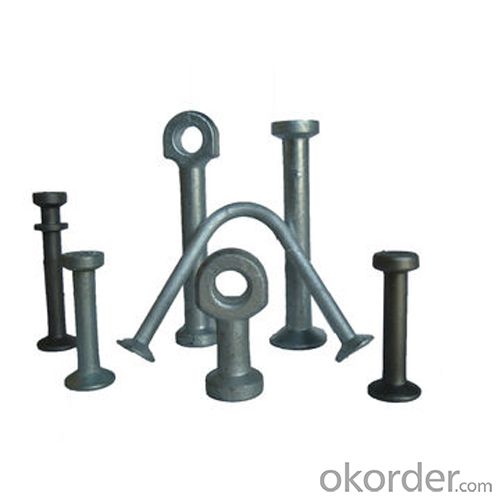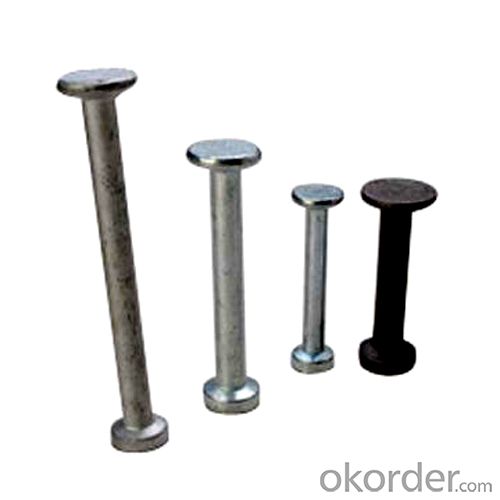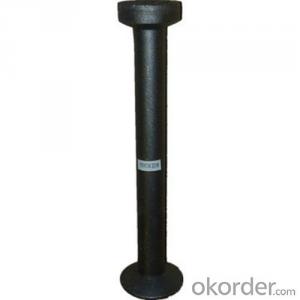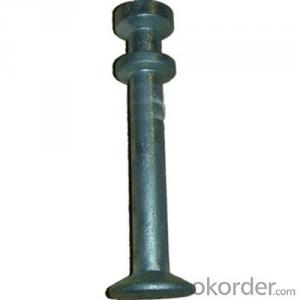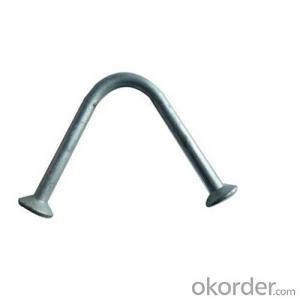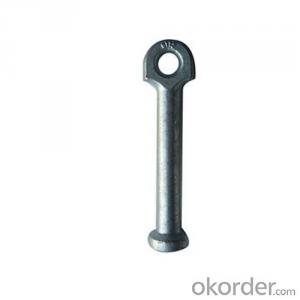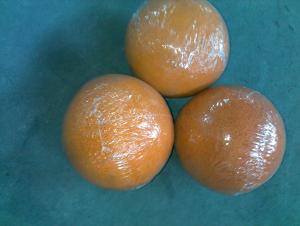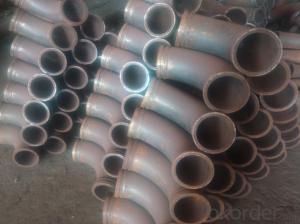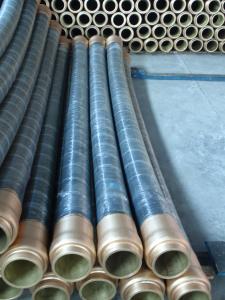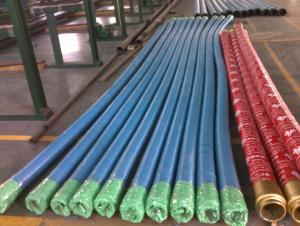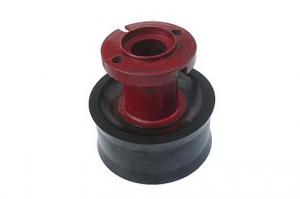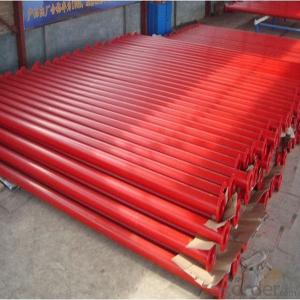Lifting Anchor Forged Straight Type Long Design VII
- Loading Port:
- Tianjin
- Payment Terms:
- TT OR LC
- Min Order Qty:
- 100 pc
- Supply Capability:
- 10000 pc/month
OKorder Service Pledge
OKorder Financial Service
You Might Also Like
1. Specification:
Material: Carbon Steel, Forged
Finish: Self Colored, or Galvanized
Packaging: carton, then on pallets, or as customers' requirements
Stocks: we have stocks for regular sizes
Warning: never exceed working load limit
2. Products available:
Swift lift lifting eyes are used with the swift lift anchors to lift, handle and place precast concrete elements
3. Primary competitive advantages:
1. More than 10 years 4 years focus on building material manufacturing
Prompt delivery lead time within 25 days after confirming order
2. Eathu's products are enhanced by the factory QA and quality control checks during the production, if necessary each order can be send out with a certificate referring back to test
3. OEM/ODM capability: more then 10 years experience
Price
Product Features
Product Performance
Prompt Delivery
Quality Approvals
4.Packaging and delivery:
Packaging details: goods packed in cartons and then on the pallet
Delivery detail: within 25 days after getting payment
Market:
Eastern Europe
Mid East/Africa
North America
FAQ:
Q1: How long about delivery time Concrete Lifting anchors ?
A1: The delivery time will be very short, normally we keep the raw materials for old customers and sometime we also keep stock products to
make sure delivery time in any emergency cases.
Q2: How do we guarantee the quality of our Concrete lifting anchors?
A2: We have established an advanced quality management system which conducts strict quality tests at every step, from raw materials to the final product. At the same time, we provide extensive follow-up service assurances as required.
Q3: How soon can we receive the product after purchase?
A3: Within three days of placing an order, we will book the vessel for goods. The specific shipping date is dependent upon international and government factors, but is typically 7 to 30 workdays.
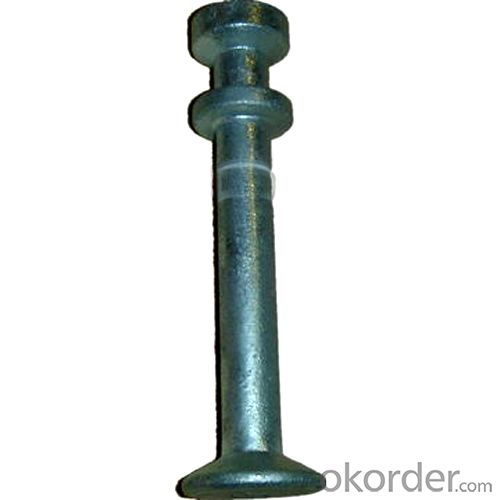
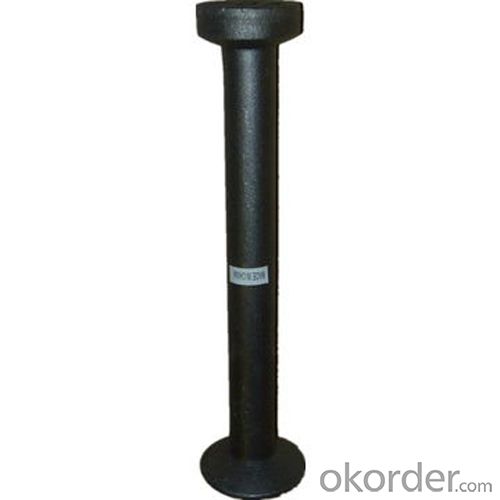
- Q: How does a hopper agitator motor ensure consistent concrete mixing?
- A hopper agitator motor ensures consistent concrete mixing by providing the necessary agitation and movement within the hopper. The motor is designed to rotate and move the agitator blades, which helps in effectively mixing the concrete ingredients. The primary function of the hopper agitator motor is to prevent the concrete from settling or segregating during the mixing process. As the motor rotates, it creates a swirling motion inside the hopper, ensuring that all the ingredients are evenly distributed and thoroughly mixed. This prevents any clumps or inconsistencies in the final concrete mixture. Additionally, the motor also helps in breaking up any lumps or clusters that may have formed within the hopper. This action further enhances the uniformity of the mixture and ensures that all the components, such as cement, aggregates, water, and additives, are properly blended together. Furthermore, the continuous movement of the agitator blades also helps in maintaining the desired consistency and homogeneity of the concrete mix. It prevents the heavier particles from settling at the bottom of the hopper, ensuring that the mixture remains consistent throughout the entire mixing process. Overall, the hopper agitator motor plays a crucial role in ensuring consistent concrete mixing by providing the necessary agitation, preventing segregation, breaking up lumps, and maintaining uniformity. Its rotational motion and strategically designed agitator blades help in achieving a well-mixed and homogeneous concrete mixture, which is essential for producing high-quality and durable concrete structures.
- Q: Can a concrete pump wear plate be repaired or does it need to be replaced entirely?
- In certain situations, a concrete pump wear plate may require repair or complete replacement. The determination of whether to repair or replace the wear plate depends on the extent of the damage and the overall condition of the plate. In the case of minor damages such as small cracks, dents, or worn out areas, suitable techniques can often be employed for repair. For instance, small cracks can be welded or filled with an appropriate epoxy or filler material. Similarly, dents or worn out areas can be filled and smoothed to restore the plate's functionality. However, if the wear plate has sustained significant damage, such as extensive cracks, severe corrosion, or large holes, it may be more advisable to replace the plate entirely. This is due to the potential compromise in the structural integrity and effectiveness of the wear plate if extensive damage is repaired. Optimal performance and safety of the concrete pump can be ensured by replacing the wear plate in these cases. Careful assessment of the wear plate's condition is crucial before deciding to repair or replace it. Seeking guidance from experts or professionals knowledgeable in concrete pump maintenance can provide valuable insights in making the appropriate decision. Additionally, regular maintenance and inspection of the wear plate can help detect potential issues early on, enabling timely repairs or replacements to prevent further damage and ensure the efficient operation of the concrete pump.
- Q: How does a concrete pump S valve function?
- A concrete pump S valve functions by controlling the flow of concrete from the hopper to the discharge outlet. The S valve is a crucial component in the concrete pumping system as it allows for the precise and efficient delivery of concrete to the desired location. The S valve consists of two separate valves, one on each side, that are connected by a central shaft. These valves are shaped like an "S", hence the name. Each valve has a concrete outlet and a hydraulic cylinder that controls its movement. When the concrete pump is activated, the hydraulic system applies pressure to the cylinders, causing them to push the valves open. As the valves open, concrete is allowed to flow from the hopper into the pump's cylinder. Once the concrete is inside the cylinder, the hydraulic system reverses the pressure on the cylinders, causing them to retract. This movement pulls the valves closed, sealing off the cylinder and preventing any backflow of concrete. As the cylinder retracts, it also pushes the concrete inside towards the discharge outlet. The pressure created by the retraction of the cylinder forces the concrete through the outlet pipe, which leads to the desired location for pouring. The S valve's design allows for a smooth and continuous flow of concrete, without any interruption or blockages. It also provides a high level of control over the concrete placement, allowing operators to adjust the flow rate and direction as needed. Overall, the concrete pump S valve is responsible for regulating the flow of concrete, ensuring its efficient and precise delivery to the desired location. Its reliable and effective functioning is vital for successful concrete pumping operations.
- Q: What are the different types of concrete pump hopper agitator blades?
- The different types of concrete pump hopper agitator blades include spiral blades, flat blades, and paddle blades.
- Q: How often should wear rings be replaced in a concrete pump?
- The replacement frequency of wear rings in a concrete pump relies on various factors such as the pump type, wear ring quality, concrete volume being pumped, and operating conditions. In essence, wear rings are components that endure substantial wear and tear due to the abrasive nature of concrete. Consequently, they will eventually require replacement to uphold the pump's efficiency and avoid potential damage to other pump parts. Typically, wear rings should be regularly inspected during routine maintenance checks. The wear patterns and extent of damage will determine if replacement is needed. In certain cases, wear rings may endure for several thousand hours of operation, while in others, replacement may be necessary more frequently. It is advisable to consult the pump manufacturer for specific guidelines on wear ring replacement intervals based on the pump model and operating conditions. They can offer recommendations based on their expertise and understanding of the pump's design and performance. Ultimately, the objective is to guarantee smooth and efficient operation of the concrete pump, minimizing downtime and maximizing its lifespan. Regular inspections and proactive replacement of wear rings when necessary will contribute to achieving this goal.
- Q: How can the concrete pump be installed and used?
- Concrete pump should be placed on a firm and flat ground, with legs down and the body stable
- Q: How often should hopper grate springs be inspected or replaced in a concrete pump?
- To ensure optimal performance and prevent potential issues, it is essential to regularly inspect the hopper grate springs in a concrete pump. The frequency of inspection or replacement depends on factors such as pump usage, operating conditions, and manufacturer recommendations. However, a general rule is to inspect the springs at least every six months or after every 500 hours of operation, whichever comes first. During the inspection, thoroughly examine the springs for any signs of wear, damage, or deformation. Check for cracks, excessive rust, or loss of tension. If any of these issues are found, immediate replacement is necessary to maintain proper functioning of the hopper grate system. Regular inspection and timely replacement of hopper grate springs are vital to prevent clogging or blockage in the hopper, which can lead to pump malfunctions or downtime. It is advisable to consult the concrete pump manufacturer's guidelines or seek assistance from a professional technician to determine specific inspection and replacement intervals based on the pump's make and model.
- Q: What are some common issues with concrete pump pipes and how can they be prevented?
- Some common issues with concrete pump pipes include clogging, wear and tear, and leakage. These issues can be prevented by regularly cleaning the pipes to avoid clogging, using high-quality pipes that are resistant to wear and tear, and ensuring proper installation and maintenance to prevent leakage. Additionally, using the correct concrete mix and adjusting the pump pressure appropriately can also help prevent these issues.
- Q: Are there any specific guidelines for the installation of control panels or electronic components in concrete pump spare parts?
- Specific guidelines exist for the installation of control panels or electronic components in concrete pump spare parts. When installing such components, it is important to consider the following guidelines: 1. Protection from Moisture: Electronic components can be damaged by moisture, so it is advisable to install them in waterproof or moisture-resistant enclosures to prevent damage from water or humidity. 2. Vibration and Shock Absorption: To avoid damage, it is recommended to use shock-absorbing mounts or vibration-resistant enclosures to minimize the impact of vibration and shock on control panels or electronic components. 3. Temperature Control: Extreme temperatures can affect concrete pump spare parts, so it is crucial to install control panels or electronic components in a temperature-controlled environment. This may involve using insulation or cooling systems to maintain a suitable operating temperature. 4. Wiring and Connections: Proper wiring and connections are essential for the functioning of control panels or electronic components. It is important to follow the manufacturer's instructions and guidelines for wiring, ensuring secure connections and providing adequate insulation and protection against short circuits or electrical hazards. 5. Accessibility and Maintenance: Control panels or electronic components should be installed in a way that allows easy access for maintenance and repairs. Sufficient space should be left around the components for easy inspection, servicing, and replacement if needed. By adhering to these guidelines, the installation of control panels or electronic components in concrete pump spare parts can be carried out to ensure their long-term functionality and durability.
- Q: How often should concrete pump control levers be inspected and replaced?
- Regular inspections should be conducted on concrete pump control levers to ensure they are in proper working order. The frequency of these inspections and any necessary replacements will depend on various factors, such as usage levels, environmental conditions, and the quality of equipment maintenance. As a general rule, it is recommended to inspect the control levers at least once a year. This inspection should involve a thorough examination of the lever mechanism to check for any signs of wear, damage, or malfunction. It is also advisable to inspect the levers after any major repairs or maintenance to ensure they have been correctly reinstalled and are functioning properly. If any issues are identified during the inspection, it is crucial to address them promptly. Depending on the severity of the problem, repairs or replacements may be required. Minor repairs can often be carried out on-site, while more significant issues may necessitate the assistance of a professional technician. Regular maintenance, including lubrication and cleaning, is important for extending the lifespan of the control levers. Following the manufacturer's maintenance and usage guidelines can also help prevent premature wear and damage. Ultimately, the frequency of inspections and replacements may vary based on specific circumstances. It is advisable to consult the equipment's manual or the manufacturer for precise recommendations regarding the maintenance and replacement of the control levers.
Send your message to us
Lifting Anchor Forged Straight Type Long Design VII
- Loading Port:
- Tianjin
- Payment Terms:
- TT OR LC
- Min Order Qty:
- 100 pc
- Supply Capability:
- 10000 pc/month
OKorder Service Pledge
OKorder Financial Service
Similar products
Hot products
Hot Searches
Related keywords
